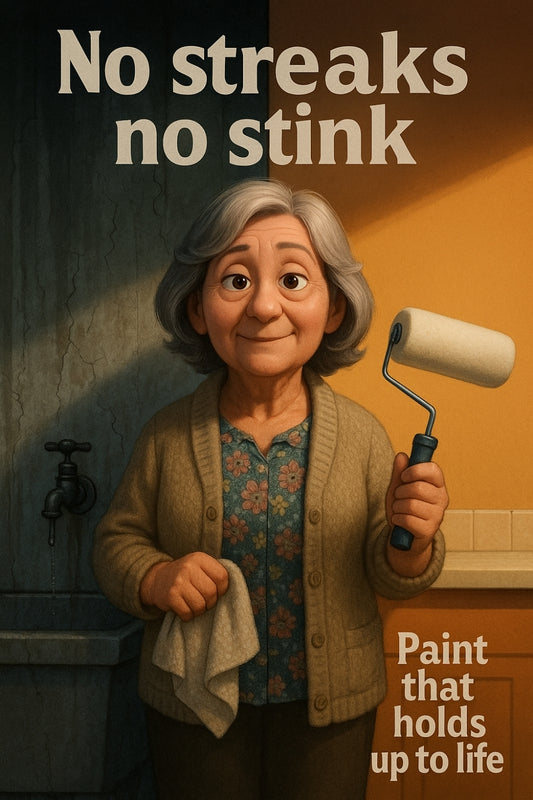
A Step-by-Step Guide to Using Interior Varnish
Share
Transform Your Home with The Perfect Varnish Finish
Whether you’re revamping a much-loved antique cabinet or giving your kitchen a fresh timber glow, choosing the right interior varnish is the key to success. Done right, it not only protects your surfaces but also brings out the natural beauty of the timber, giving your home a polished and professional finish. But hey, don’t fret—finishing timber isn’t rocket science! Let’s walk you through a simple guide to using interior varnish that anyone (yes, even first-timers) can manage.
Step 1: Choose Your Interior Varnish Wisely
First things first, before you start slapping varnish on whatever surface you’ve got ready, you’ve got to pick the right one for your project. One excellent choice is Haymes interior varnish It’s an easy-to-use varnish that works brilliantly on both natural and stained interior timber. With its hard-wearing finish, it offers superior resistance to heat and steam, making it a top pick for kitchens and bathrooms. Plus, it’s not just strong; it preserves your timber’s natural look while holding up against daily wear and tear. Win-win, right? Perfect for your DIY efforts!
Step 2: Gather Your Supplies
Once you’ve got your varnish sorted, the next step is to get your supplies together. Here’s your essential list:
- Interior varnish of your choice (looking at you, Haymes Paint Woodcare Interior Varnish!)
- Sandpaper (medium to fine grit, depending on the current surface texture)
- A clean lint-free cloth
- A good-quality brush or varnish applicator
- A drop cloth to protect surrounding surfaces
The beauty of varnishing is how small the tool kit needs to be. Honestly, it’s not that daunting once you’re prepped!
Step 3: Prepare Your Surface
Varnish needs a clean, smooth surface to work its magic. If your timber is rough or has an old finish, it’s sanding time! Start with medium grit to strip the surface, then finish up with fine grit for smoothness. Be patient—trust me, smooth preparation will make your finish a thousand times better.
Once done, wipe away all the dust with a damp cloth and allow the area to dry completely. Just imagine how crisp your future finish will look as you remove all those stray dust particles.
Step 4: Applying the Varnish
You’re officially ready to varnish! Stir your varnish gently to avoid bubbles, then use your brush to apply thin coats along the timber's grain. Don’t rush it—remember, thin layers are better than gloopy thick ones.
Haymes Paint Woodcare Interior Varnish, in particular, glides on like a dream. Its hard-wearing and easy-to-clean formula ensures a streak-free finish, even if your brushwork isn’t perfect. This means even DIY beginners can get a lovely, professional-looking result. For extra durability (especially in high-use areas like the kitchen), apply 2-3 coats, letting each dry thoroughly before the next.
Step 5: Patience, My Friend
Once you’re done applying the final coat, resist the urge to start touching or using the surface right away. Let the varnish cure fully to achieve its hard-wearing potential. After all, nothing ruins a perfect finish quicker than jumping the gun too early.
Where to Use Varnish
Timber varnish can transform an array of surfaces including cupboards, doors, skirting boards, and even furniture. That kitchen table you once considered replacing? It might just love a coat of varnish and a second life! The heat and steam-resisting properties of Haymes Paint Woodcare Interior Varnish also make it a champion for use on bathroom vanities.
Why It Matters
Not only does varnish protect the timber beneath from wear and tear, but that unbeatable glossy sheen can also help turn ordinary surfaces into design highlights of your home. More than functionality, varnishing is wonderfully transformative—it’s like a little “wow” button for every surface you touch.
Final Touch
Varnishing may seem like a bit of a commitment, but trust me, the end result makes every layer worth it. Whether you’re updating a single piece of furniture or tackling a larger home project, the gloss, durability, and warmth it brings to your space are second to none.
So, ready to grab that varnish and brush? Don’t let your home’s timber settle for “okay” when it could be brilliant. And when in doubt, remember: prep well, use thin coats, and don’t skimp on curing time. You’ve got this!
Happy varnishing!
Cheers,
Candeece



